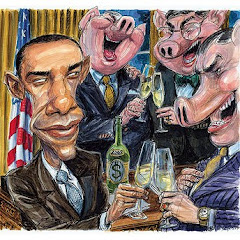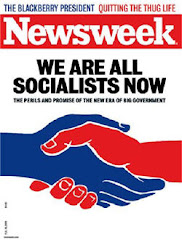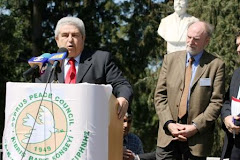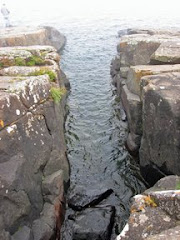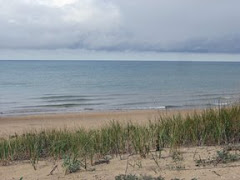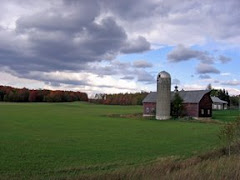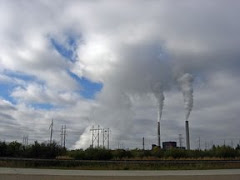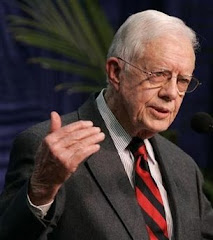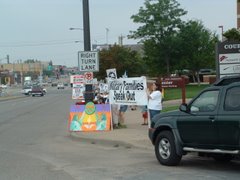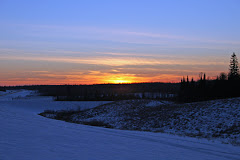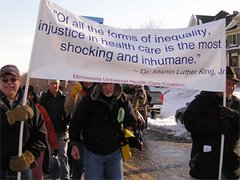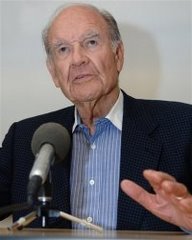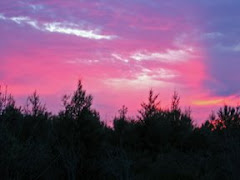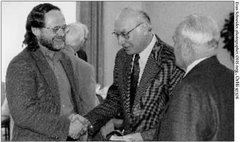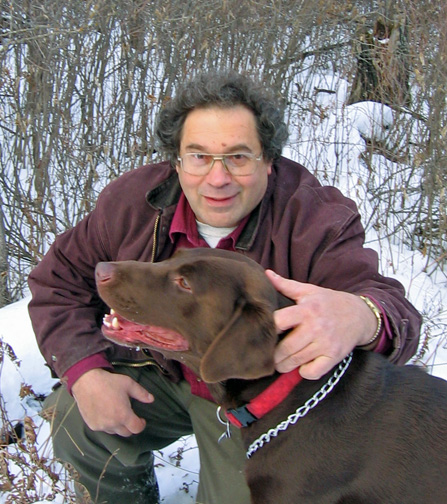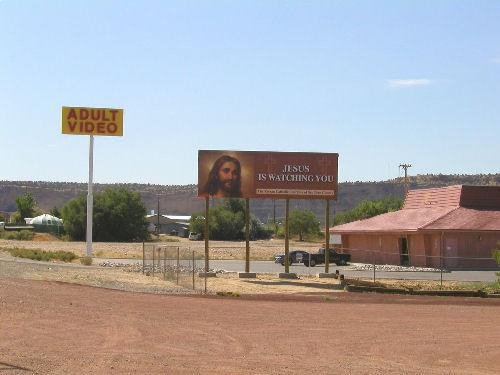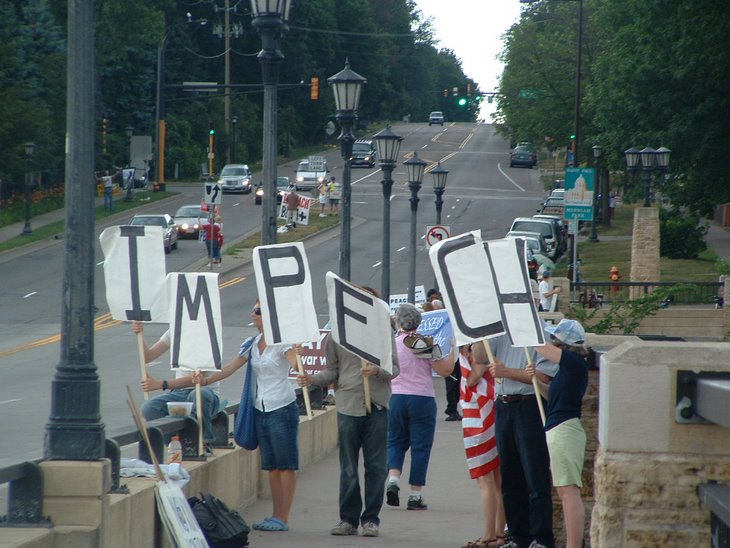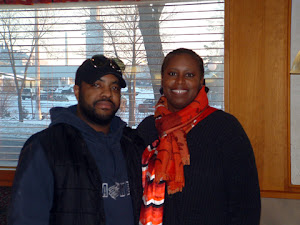The fact is, people don't trust scientists and their conclusions because so many scientists have sold themselves to big business.
Science is not being used for the people in this country.
Science has been used to bolster the corporate bottom line: profits.
Just look at science and the university.
Research has been corrupted by the corporate drive for profits.
It is relatively easy for big business to buy a "scientific" opinion to support anything that can make a profit--- from militarism to the kind of food we eat.
Scientists, for the most part, don't use their research to advance peace, anti-racism, the well-being of people and the environment. Science has been used to expand Wall Street's profits. This is why people don't trust scientists and their views, opinions and research.
Scientists do nothing to bring their ideas and research into the public square where people have a choice to think about any of this.
Scientists don't come into the public square to defend their ideas, opinions and research; they remain aloof of the people and then we get articles like this outlining the rift between "regular" people and scientists.
This rotten capitalist social and economic system corrupts science just like it corrupts politics, health care, sports, culture and everything else. And then we wonder why people doubt scientific reasoning?
We need a social and economic system, socialism, where science is for the good of people and the environment.When people understand science is on their side, not Wall Street's side, people will support science.
Most important is we need a scientific community squarely on the side of peace--- in opposition to militarization and these dirty imperialist wars.
Alan L. Maki
Poll:
Poll Reveals Rift Between Scientists, Regular Folks
When it comes to food, energy, and education, Americans don't follow experts' lead.

Recent
outbreaks of measles have been tied to children who haven't been
vaccinated. Many people still believe that childhood vaccinations are
dangerous, despite scientific evidence to the contrary.
Photograph by Joe Raedle, Getty
Dan Vergano
Published January 29, 2015
What do the International Space Station and bioengineered
fuels have in common? They're about the only technological advances that
both scientists and the American public actually like.
On most other scientific matters, a widespread "opinion gap" splits the experts from everyday folks, pollsters at the
Pew Research Center reported Thursday.
The rift persists in long-running issues such as the causes of climate
change and the safety of nuclear power. And it crops up in the news
today in battles over outbreaks of measles tied to children who haven't
been vaccinated.
Scientists say this opinion gap points to
shortcomings in their own skills at reaching out to the public and to
deficits in science education. On the last point, at least, the public
agrees, with majorities on both sides rating U.S. education as average
at best.
That's bad news for the future, says American Association for the Advancement of Science head
Alan Leshner, if Americans want to keep enjoying the benefits of science.
"There is a disconnect between the way the public
perceives science and the way that scientists see science," says
Leshner, whose Washington D.C.-based organization collaborated with Pew
on the polling. "Scientists need to do something to turn this around."
In an editorial in the journal
Science,
Leshner called on scientists to personally stem a swelling
"unbridgeable chasm" in attitudes between researchers and the taxpayers
who largely fund essential research.
Mind the Gap
In a head-to-head comparison of expert and
everyday attitudes, the two new polls asked 2,002 U.S. adults and 3,748
AAAS members (described as "a broad-ranging group of professionally
engaged scientists") identical questions about their views on scientific
achievement, education, and controversial issues.
"People are still mostly positive about science,"
but compared with five years ago, "we are seeing a slight souring of the
views," says Pew polling expert
Cary Funk. "When you look across the questions, you are struck by large differences in citizens and scientists."
On the safety of genetically modified food and
pesticides, for example, experts and the public differed by 40
percentage points or more in their approval, with the majority of
scientists saying GMO foods are safe to eat. On their beliefs in
human-caused climate change and human evolution, the groups differed by
more than 30 percentage points. Differences nearly as large are seen on
vaccination, animal research, and offshore oil drilling.

Emily M. Eng, NG Staff. Source: Pew Research Center
"We are seeing the gaps as larger now across a large set of issues," Funk says, compared to past polls.
Political Science
Though scientists point to a lack of public
understanding of science, "having scientists speak at Kiwanis club
meetings is not going to change a lot of people's views about science,"
says polling expert
Jon Miller of the University of Michigan in Ann Arbor.
The survey results don't differ a great deal from
past polls, but this only reinforces anxiety over the future of science,
Miller adds. Support for research has gone from a bedrock American
principle to one suffering fissures from political fistfights over human
evolution, embryonic stem cells, climate change, and other issues.
"A lot of scientific issues have become
politicized," Miller says. "I think this report is kind of tiptoeing
around that reality, where the [U.S.] Republican party has sought
political support from voters with religious views who are often hostile
to science."
To his point, an
American Sociological Review study also
reported on Thursday that
roughly one in five U.S. adults is deeply religious and accepts
astronomy, radioactivity, and genetics as settled science but rejects
human evolution and the big bang. These are high-income, well-educated
people who are "scientifically literate" and view science favorably,
according to study lead author
Timothy O'Brien of the
University of Evansville in Indiana. They just toss overboard science that clashes with literal readings of the Bible.
Over the last decade, public opinion researchers such as Yale's
Dan Kahan have found that people's views on many scientific issues,
such as climate and evolution, are largely driven by their cultural views. Sociologist
Robert Brulle of Drexel University in Philadelphia likewise found that when
political leaders change their views on climate change, voters are more likely to be swayed than they are by the voices of scientists.
Leshner, however, disagrees. "Political leaders
don't carry the same kind of credibility that well-informed scientists
do," he says.
He argues that scientists can better sway public
opinion by making the case for science in smaller venues, such as
retirement communities or library groups, instead of the traditional
lecture hall. "It is important that the public understands that
scientists are people too."
Why Do Many Reasonable People Doubt Science?
We live in an age when all manner of scientific knowledge—from climate change to vaccinations—faces furious opposition.
Some even have doubts about the moon landing.
By Joel Achenbach
Photographs by Richard Barnes
There’s a scene in Stanley Kubrick’s comic masterpiece
Dr. Strangelove
in which Jack D. Ripper, an American general who’s gone rogue and
ordered a nuclear attack on the Soviet Union, unspools his paranoid
worldview—and the explanation for why he drinks “only distilled water,
or rainwater, and only pure grain alcohol”—to Lionel Mandrake, a
dizzy-with-anxiety group captain in the Royal Air Force.
Ripper: Have you ever heard of a thing called fluoridation? Fluoridation of water?
Mandrake: Ah, yes, I have heard of that, Jack. Yes, yes.
Ripper: Well, do you know what it is?
Mandrake: No. No, I don’t know what it is. No.
Ripper: Do you realize that fluoridation is the most monstrously conceived and dangerous communist plot we have ever had to face?
The movie came out in 1964, by which time the health
benefits of fluoridation had been thoroughly established, and
antifluoridation conspiracy theories could be the stuff of comedy. So
you might be surprised to learn that, half a century later, fluoridation
continues to incite fear and paranoia. In 2013 citizens in Portland,
Oregon, one of only a few major American cities that don’t fluoridate
their water, blocked a plan by local officials to do so. Opponents
didn’t like the idea of the government adding “chemicals” to their
water. They claimed that fluoride could be harmful to human health.
Actually fluoride is a natural mineral that, in the weak
concentrations used in public drinking water systems, hardens tooth
enamel and prevents tooth decay—a cheap and safe way to improve dental
health for everyone, rich or poor, conscientious brusher or not. That’s
the scientific and medical consensus.
To which some people in Portland, echoing antifluoridation activists around the world, reply: We don’t believe you.
We live in an age when all manner of scientific knowledge—from the
safety of fluoride and vaccines to the reality of climate change—faces
organized and often furious opposition. Empowered by their own sources
of information and their own interpretations of research, doubters have
declared war on the consensus of experts. There are so many of these
controversies these days, you’d think a diabolical agency had put
something in the water to make people argumentative. And there’s so much
talk about the trend these days—in books, articles, and academic
conferences—that science doubt itself has become a pop-culture meme. In
the recent movie
Interstellar, set in a futuristic, downtrodden
America where NASA has been forced into hiding, school textbooks say the
Apollo moon landings were faked.
In a sense all this is not surprising. Our lives are permeated by
science and technology as never before. For many of us this new world is
wondrous, comfortable, and rich in rewards—but also more complicated
and sometimes unnerving. We now face risks we can’t easily analyze.
We’re asked to accept, for example, that it’s safe to eat food
containing genetically modified organisms (GMOs) because, the experts
point out, there’s no evidence that it isn’t and no reason to believe
that altering genes precisely in a lab is more dangerous than altering
them wholesale through traditional breeding. But to some people the very
idea of transferring genes between species conjures up mad scientists
running amok—and so, two centuries after Mary Shelley wrote
Frankenstein, they talk about Frankenfood.
The world crackles with real and imaginary hazards, and
distinguishing the former from the latter isn’t easy. Should we be
afraid that the Ebola virus, which is spread only by direct contact with
bodily fluids, will mutate into an airborne superplague? The scientific
consensus says that’s extremely unlikely: No virus has ever been
observed to completely change its mode of transmission in humans, and
there’s zero evidence that the latest strain of Ebola is any different.
But type “airborne Ebola” into an Internet search engine, and you’ll
enter a dystopia where this virus has almost supernatural powers,
including the power to kill us all.
In this bewildering world we have to decide what to believe and
how to act on that. In principle that’s what science is for. “Science is
not a body of facts,” says geophysicist Marcia McNutt, who once headed
the U.S. Geological Survey and is now editor of
Science, the
prestigious journal. “Science is a method for deciding whether what we
choose to believe has a basis in the laws of nature or not.” But that
method doesn’t come naturally to most of us. And so we run into trouble,
again and again.

Library of Congress, Geography and Map Division
Square Intuitions Die Hard
That
the Earth is round has been known since antiquity—Columbus knew he
wouldn’t sail off the edge of the world—but alternative geographies
persisted even after circumnavigations had become common. This 1893 map
by Orlando Ferguson, a South Dakota businessman, is a loopy variation on
19th-century flat-Earth beliefs. Flat-Earthers held that the planet was
centered on the North Pole and bounded by a wall of ice, with the sun,
moon, and planets a few hundred miles above the surface. Science often
demands that we discount our direct sensory experiences—such as seeing
the sun cross the sky as if circling the Earth—in favor of theories that
challenge our beliefs about our place in the universe.
The trouble goes way back, of course. The scientific method
leads us to truths that are less than self-evident, often mind-blowing,
and sometimes hard to swallow. In the early 17th century, when Galileo
claimed that the Earth spins on its axis and orbits the sun, he wasn’t
just rejecting church doctrine. He was asking people to believe
something that defied common sense—because it sure looks like the sun’s
going around the Earth, and you can’t feel the Earth spinning. Galileo
was put on trial and forced to recant. Two centuries later Charles
Darwin escaped that fate. But his idea that all life on Earth evolved
from a primordial ancestor and that we humans are distant cousins of
apes, whales, and even deep-sea mollusks is still a big ask for a lot of
people. So is another 19th-century notion: that carbon dioxide, an
invisible gas that we all exhale all the time and that makes up less
than a tenth of one percent of the atmosphere, could be affecting
Earth’s climate.
Even when we intellectually accept these precepts of science, we
subconsciously cling to our intuitions—what researchers call our naive
beliefs. A recent study by Andrew Shtulman of Occidental College showed
that even students with an advanced science education had a hitch in
their mental gait when asked to affirm or deny that humans are descended
from sea animals or that Earth goes around the sun. Both truths are
counterintuitive. The students, even those who correctly marked “true,”
were slower to answer those questions than questions about whether
humans are descended from tree-dwelling creatures (also true but easier
to grasp) or whether the moon goes around the Earth (also true but
intuitive). Shtulman’s research indicates that as we become
scientifically literate, we repress our naive beliefs but never
eliminate them entirely. They lurk in our brains, chirping at us as we
try to make sense of the world.
Most of us do that by relying on personal experience and
anecdotes, on stories rather than statistics. We might get a
prostate-specific antigen test, even though it’s no longer generally
recommended, because it caught a close friend’s cancer—and we pay less
attention to statistical evidence, painstakingly compiled through
multiple studies, showing that the test rarely saves lives but triggers
many unnecessary surgeries. Or we hear about a cluster of cancer cases
in a town with a hazardous waste dump, and we assume pollution caused
the cancers. Yet just because two things happened together doesn’t mean
one caused the other, and just because events are clustered doesn’t mean
they’re not still random.
We have trouble digesting randomness; our brains crave pattern and
meaning. Science warns us, however, that we can deceive ourselves. To
be confident there’s a causal connection between the dump and the
cancers, you need statistical analysis showing that there are many more
cancers than would be expected randomly, evidence that the victims were
exposed to chemicals from the dump, and evidence that the chemicals
really can cause cancer.

Photo: Bettman/Corbis
Evolution on Trial
In
1925 in Dayton, Tennessee, where John Scopes was standing trial for
teaching evolution in high school, a creationist bookseller hawked his
wares. Modern biology makes no sense without the concept of evolution,
but religious activists in the United States continue to demand that
creationism be taught as an alternative in biology class. When science
conflicts with a person’s core beliefs, it usually loses.
Even for scientists, the scientific method is a hard discipline.
Like the rest of us, they’re vulnerable to what they call confirmation
bias—the tendency to look for and see only evidence that confirms what
they already believe. But unlike the rest of us, they submit their ideas
to formal peer review before publishing them. Once their results are
published, if they’re important enough, other scientists will try to
reproduce them—and, being congenitally skeptical and competitive, will
be very happy to announce that they don’t hold up. Scientific results
are always provisional, susceptible to being overturned by some future
experiment or observation. Scientists rarely proclaim an absolute truth
or absolute certainty. Uncertainty is inevitable at the frontiers of
knowledge.
Sometimes scientists fall short of the ideals of the scientific
method. Especially in biomedical research, there’s a disturbing trend
toward results that can’t be reproduced outside the lab that found them,
a trend that has prompted a push for greater transparency about how
experiments are conducted. Francis Collins, the director of the National
Institutes of Health, worries about the “secret sauce”—specialized
procedures, customized software, quirky ingredients—that researchers
don’t share with their colleagues. But he still has faith in the larger
enterprise.
“Science will find the truth,” Collins says. “It may get it wrong
the first time and maybe the second time, but ultimately it will find
the truth.” That provisional quality of science is another thing a lot
of people have trouble with. To some climate change skeptics, for
example, the fact that a few scientists in the 1970s were worried (quite
reasonably, it seemed at the time) about the possibility of a coming
ice age is enough to discredit the concern about global warming now.
Last fall the Intergovernmental Panel on Climate Change,
which consists of hundreds of scientists operating under the auspices of
the United Nations, released its fifth report in the past 25 years.
This one repeated louder and clearer than ever the consensus of the
world’s scientists: The planet’s surface temperature has risen by about
1.5 degrees Fahrenheit in the past 130 years, and human actions,
including the burning of fossil fuels, are extremely likely to have been
the dominant cause of the warming since the mid-20th century. Many
people in the United States—a far greater percentage than in other
countries—retain doubts about that consensus or believe that climate
activists are using the threat of global warming to attack the free
market and industrial society generally. Senator James Inhofe of
Oklahoma, one of the most powerful Republican voices on environmental
matters, has long declared global warming a hoax.
The idea that hundreds of scientists from all over the world would
collaborate on such a vast hoax is laughable—scientists love to debunk
one another. It’s very clear, however, that organizations funded in part
by the fossil fuel industry have deliberately tried to undermine the
public’s understanding of the scientific consensus by promoting a few
skeptics.
The news media give abundant attention to such mavericks,
naysayers, professional controversialists, and table thumpers. The media
would also have you believe that science is full of shocking
discoveries made by lone geniuses. Not so. The (boring) truth is that it
usually advances incrementally, through the steady accretion of data
and insights gathered by many people over many years. So it has been
with the consensus on climate change. That’s not about to go poof with
the next thermometer reading.
But industry PR, however misleading, isn’t enough to explain why
only 40 percent of Americans, according to the most recent poll from the
Pew Research Center, accept that human activity is the dominant cause
of global warming.
The “science communication problem,” as it’s blandly called by the
scientists who study it, has yielded abundant new research into how
people decide what to believe—and why they so often don’t accept the
scientific consensus. It’s not that they can’t grasp it, according to
Dan Kahan of Yale University. In one study he asked 1,540 Americans, a
representative sample, to rate the threat of climate change on a scale
of zero to ten. Then he correlated that with the subjects’ science
literacy. He found that higher literacy was associated with stronger
views—at both ends of the spectrum. Science literacy promoted
polarization on climate, not consensus. According to Kahan, that’s
because people tend to use scientific knowledge to reinforce beliefs
that have already been shaped by their worldview.
Americans fall into two basic camps, Kahan says. Those with a more
“egalitarian” and “communitarian” mind-set are generally suspicious of
industry and apt to think it’s up to something dangerous that calls for
government regulation; they’re likely to see the risks of climate
change. In contrast, people with a “hierarchical” and “individualistic”
mind-set respect leaders of industry and don’t like government
interfering in their affairs; they’re apt to reject warnings about
climate change, because they know what accepting them could lead to—some
kind of tax or regulation to limit emissions.
In the U.S., climate change somehow has become a litmus test that
identifies you as belonging to one or the other of these two
antagonistic tribes. When we argue about it, Kahan says, we’re actually
arguing about who we are, what our crowd is. We’re thinking, People like
us believe this. People like that do not believe this. For a
hierarchical individualist, Kahan says, it’s not irrational to reject
established climate science: Accepting it wouldn’t change the world, but
it might get him thrown out of his tribe.
“Take a barber in a rural town in South Carolina,” Kahan has
written. “Is it a good idea for him to implore his customers to sign a
petition urging Congress to take action on climate change? No. If he
does, he will find himself out of a job, just as his former congressman,
Bob Inglis, did when he himself proposed such action.”
Science appeals to our rational brain, but our beliefs are
motivated largely by emotion, and the biggest motivation is remaining
tight with our peers. “We’re all in high school. We’ve never left high
school,” says Marcia McNutt. “People still have a need to fit in, and
that need to fit in is so strong that local values and local opinions
are always trumping science. And they will continue to trump science,
especially when there is no clear downside to ignoring science.”
Meanwhile the Internet makes it easier than ever for climate
skeptics and doubters of all kinds to find their own information and
experts. Gone are the days when a small number of powerful
institutions—elite universities, encyclopedias, major news
organizations, even
National Geographic—served as gatekeepers of
scientific information. The Internet has democratized information, which
is a good thing. But along with cable TV, it has made it possible to
live in a “filter bubble” that lets in only the information with which
you already agree.
How to penetrate the bubble? How to convert climate skeptics?
Throwing more facts at them doesn’t help. Liz Neeley, who helps train
scientists to be better communicators at an organization called Compass,
says that people need to hear from believers they can trust, who share
their fundamental values. She has personal experience with this. Her
father is a climate change skeptic and gets most of his information on
the issue from conservative media. In exasperation she finally
confronted him: “Do you believe them or me?” She told him she believes
the scientists who research climate change and knows many of them
personally. “If you think I’m wrong,” she said, “then you’re telling me
that you don’t trust me.” Her father’s stance on the issue softened. But
it wasn’t the facts that did it.
If you’re a rationalist, there’s something a little
dispiriting about all this. In Kahan’s descriptions of how we decide
what to believe, what we decide sometimes sounds almost incidental.
Those of us in the science-communication business are as tribal as
anyone else, he told me. We believe in scientific ideas not because we
have truly evaluated all the evidence but because we feel an affinity
for the scientific community. When I mentioned to Kahan that I fully
accept evolution, he said, “Believing in evolution is just a description
about you. It’s not an account of how you reason.”
Maybe—except that evolution actually happened. Biology is
incomprehensible without it. There aren’t really two sides to all these
issues. Climate change is happening. Vaccines really do save lives.
Being right does matter—and the science tribe has a long track record of
getting things right in the end. Modern society is built on things it
got right.
Doubting science also has consequences. The people who believe
vaccines cause autism—often well educated and affluent, by the way—are
undermining “herd immunity” to such diseases as whooping cough and
measles. The anti-vaccine movement has been going strong since the
prestigious British medical journal the
Lancet published a study
in 1998 linking a common vaccine to autism. The journal later retracted
the study, which was thoroughly discredited. But the notion of a
vaccine-autism connection has been endorsed by celebrities and
reinforced through the usual Internet filters. (Anti-vaccine activist
and actress Jenny McCarthy famously said on the
Oprah Winfrey Show, “The University of Google is where I got my degree from.”)
In the climate debate the consequences of doubt are likely global
and enduring. In the U.S., climate change skeptics have achieved their
fundamental goal of halting legislative action to combat global warming.
They haven’t had to win the debate on the merits; they’ve merely had to
fog the room enough to keep laws governing greenhouse gas emissions
from being enacted.
Some environmental activists want scientists to emerge from their
ivory towers and get more involved in the policy battles. Any scientist
going that route needs to do so carefully, says Liz Neeley. “That line
between science communication and advocacy is very hard to step back
from,” she says. In the debate over climate change the central
allegation of the skeptics is that the science saying it’s real and a
serious threat is politically tinged, driven by environmental activism
and not hard data. That’s not true, and it slanders honest scientists.
But it becomes more likely to be seen as plausible if scientists go
beyond their professional expertise and begin advocating specific
policies.
It’s their very detachment, what you might call the
cold-bloodedness of science, that makes science the killer app. It’s the
way science tells us the truth rather than what we’d like the truth to
be. Scientists can be as dogmatic as anyone else—but their dogma is
always wilting in the hot glare of new research. In science it’s not a
sin to change your mind when the evidence demands it. For some people,
the tribe is more important than the truth; for the best scientists, the
truth is more important than the tribe.
Scientific thinking has to be taught, and sometimes it’s not
taught well, McNutt says. Students come away thinking of science as a
collection of facts, not a method. Shtulman’s research has shown that
even many college students don’t really understand what evidence is. The
scientific method doesn’t come naturally—but if you think about it,
neither does democracy. For most of human history neither existed. We
went around killing each other to get on a throne, praying to a rain
god, and for better and much worse, doing things pretty much as our
ancestors did.
Now we have incredibly rapid change, and it’s scary sometimes.
It’s not all progress. Our science has made us the dominant organisms,
with all due respect to ants and blue-green algae, and we’re changing
the whole planet. Of course we’re right to ask questions about some of
the things science and technology allow us to do. “Everybody should be
questioning,” says McNutt. “That’s a hallmark of a scientist. But then
they should use the scientific method, or trust people using the
scientific method, to decide which way they fall on those questions.” We
need to get a lot better at finding answers, because it’s certain the
questions won’t be getting any simpler.
Washington Post science writer Joel Achenbach has contributed to
National Geographic since 1998. Photographer Richard Barnes’s last feature was the September 2014 cover story on
Nero.



































